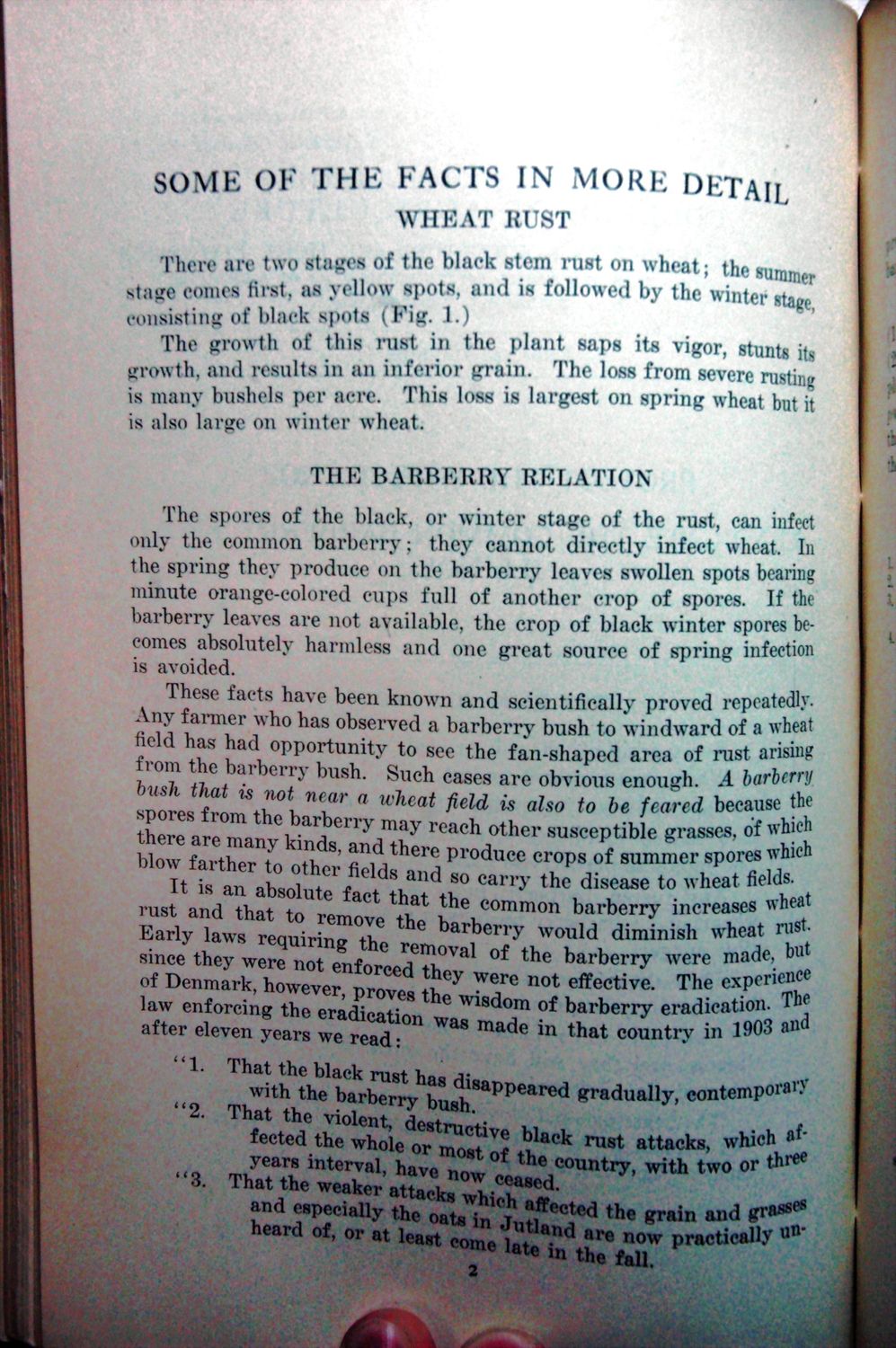Caption: War Publications - WWI Compilation 1923 - Article 29
This is a reduced-resolution page image for fast online browsing.

EXTRACTED TEXT FROM PAGE:
* SOME OF THE FACTS IN MORE DETAl Will:AT Kt ST em rust on wheat, the summer stage comes first, as yellow spots, and _ stage consisting of blaek spots (Fig. I.) The growth of this rust in the pi stunts growth, and results in an inferior grain 068 is many bushels per acre. This loss is largest on spring is also large on winter wheat. THE BABBERRY KKNATION _—^ . ^ ^ . v * va. v*iv .-nun, wi ^ m i l i . i i u ^ r in n i t ; i uoty Call JIlUTl only the common barberry; they cannot directly infect wheat. In the spring they produce on the barberry leaves swollen spots bearing minute orange-colored cups full of another wop of spores. If the barberry leaves are not available, the crop of black winter spores becomes absolutely harmless and one great source of spring infection is avoided. These facts have been known and scientifically proved repeatedly ~- '^^* « vMvviiy unan 10 w m u w a r u ui a wuw neid has had opportunity to see the fan-shaped area of nut arising 8 7 bush S u c h easos ai c hZ S * ^ * " ! ' obA-ioiw enough. 1 **&«"* Whea fidd 6e b e e a u s e th(? snores f r ^ v / T * ° * " «'*> >° /«*™* blow farther t n n t T f Produce crops of summer spores which C C d a n d S0 thc It is an ab J ,t % i \ ««* disease to wheat fields, a rust Vnd th ^ t t ^ V t h e f V — C h e r r y increases wheat Early laws requiringZ barberry would diminish wheat rust. dthere sujthey ™T™?nz::T: i i 1 of Denmark, however, pr 0 v e 8 *?JT law enforcing the eradio^!f m&de after eleven years we read *** 1. i l n 0 t effeCtive 18dom of in ° **«* ™ -. ! The lack f the made b ^ " r t barberry eradication. The that countrv l903 » ** 2. rust has disappeared with the barberry bush. ( < T Z ^ l t * rust attacks, which * OI t n e years interval havoT c a <country, with two or three 3. That the weaker' s£ll"°l . ? <*d. an and grass* no heard of, or at least «We l a ^ V * * practically 2
|